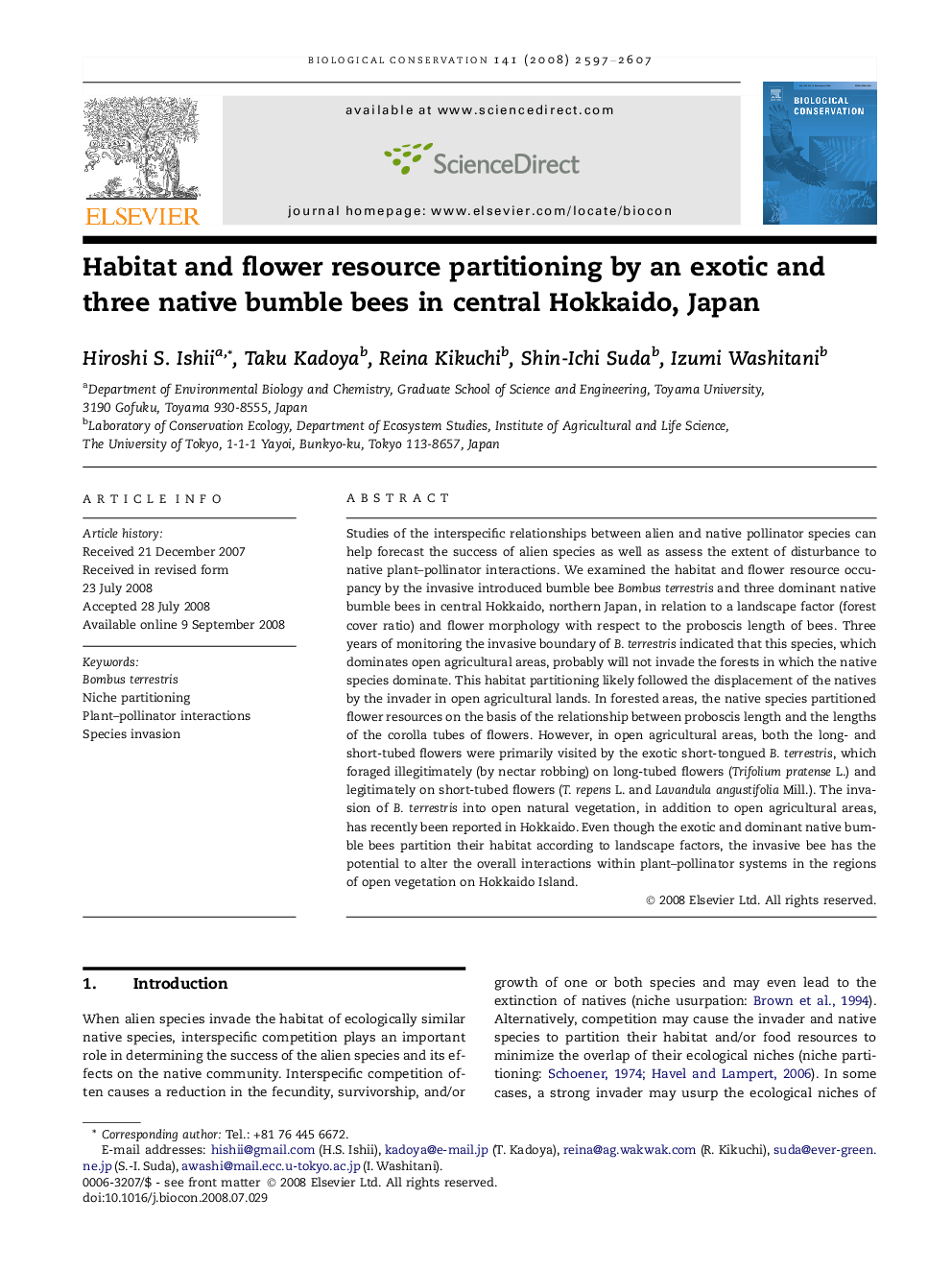| Article ID | Journal | Published Year | Pages | File Type |
|---|---|---|---|---|
| 4386645 | Biological Conservation | 2008 | 11 Pages |
Studies of the interspecific relationships between alien and native pollinator species can help forecast the success of alien species as well as assess the extent of disturbance to native plant–pollinator interactions. We examined the habitat and flower resource occupancy by the invasive introduced bumble bee Bombus terrestris and three dominant native bumble bees in central Hokkaido, northern Japan, in relation to a landscape factor (forest cover ratio) and flower morphology with respect to the proboscis length of bees. Three years of monitoring the invasive boundary of B. terrestris indicated that this species, which dominates open agricultural areas, probably will not invade the forests in which the native species dominate. This habitat partitioning likely followed the displacement of the natives by the invader in open agricultural lands. In forested areas, the native species partitioned flower resources on the basis of the relationship between proboscis length and the lengths of the corolla tubes of flowers. However, in open agricultural areas, both the long- and short-tubed flowers were primarily visited by the exotic short-tongued B. terrestris, which foraged illegitimately (by nectar robbing) on long-tubed flowers (Trifolium pratense L.) and legitimately on short-tubed flowers (T. repens L. and Lavandula angustifolia Mill.). The invasion of B. terrestris into open natural vegetation, in addition to open agricultural areas, has recently been reported in Hokkaido. Even though the exotic and dominant native bumble bees partition their habitat according to landscape factors, the invasive bee has the potential to alter the overall interactions within plant–pollinator systems in the regions of open vegetation on Hokkaido Island.
